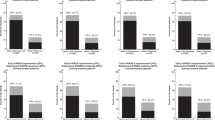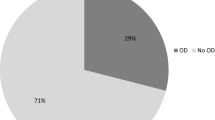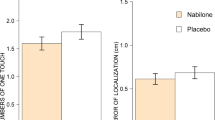Abstract
A RECENT publication1 prompts us to report the preparation of a number of novel synthetic antispasmodics related to papaverine. The numerous synthetic analogues of papaverine (I) which have been prepared (see, for example, Blicke2) can be divided into two main groups : (1) those with an intact isoquinoline ring system (for example, eupaverine3) and (2) those in which the isoquinoline ring has been opened at the line a—a to give a bis-(2-phenylethyl)amine (for example, sestron4). 
This is a preview of subscription content, access via your institution
Access options
Subscribe to this journal
Receive 51 print issues and online access
$199.00 per year
only $3.90 per issue
Buy this article
- Purchase on SpringerLink
- Instant access to full article PDF
Prices may be subject to local taxes which are calculated during checkout
Similar content being viewed by others
References
Heinzelman and Aspergren, J. Amer. Chem. Soc., 75, 3409 (1953).
Blicke, Ann. Rev. Biochem., 13, 549 (1944).
Kreitmair, Arch. Exp. Pathol. Pharmakol., 164, 509 (1932).
Külz and Rosenmund, Klin. Wochschr., 17, 345 (1938).
Mercier, Lespagnol and Mercier, C.R. Soc. Biol., 143, 1123 (1949).
Author information
Authors and Affiliations
Rights and permissions
About this article
Cite this article
CYMERMAN-CRAIG, J., MARTIN, K., WAILES, P. et al. New Synthetic Antispasmodics. Nature 174, 231 (1954). https://doi.org/10.1038/174231a0
Issue date:
DOI: https://doi.org/10.1038/174231a0



